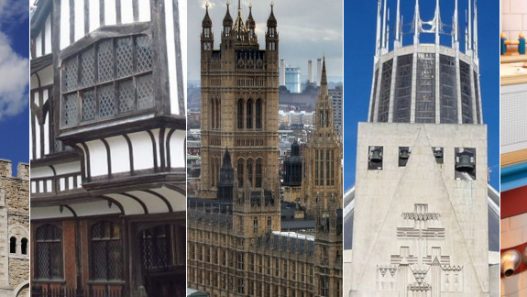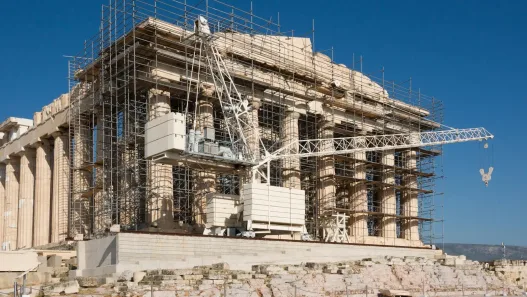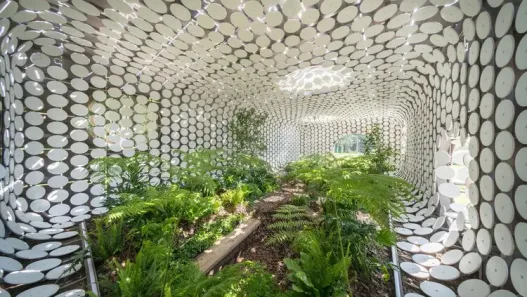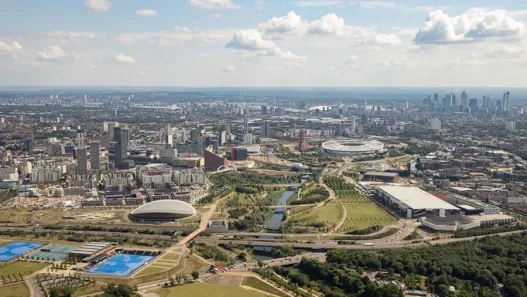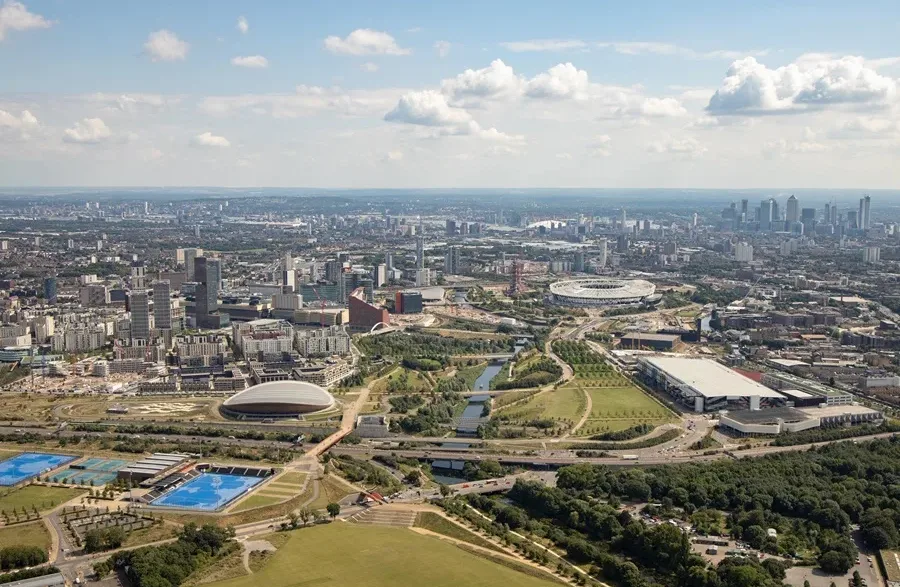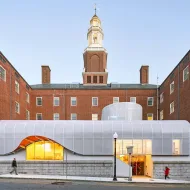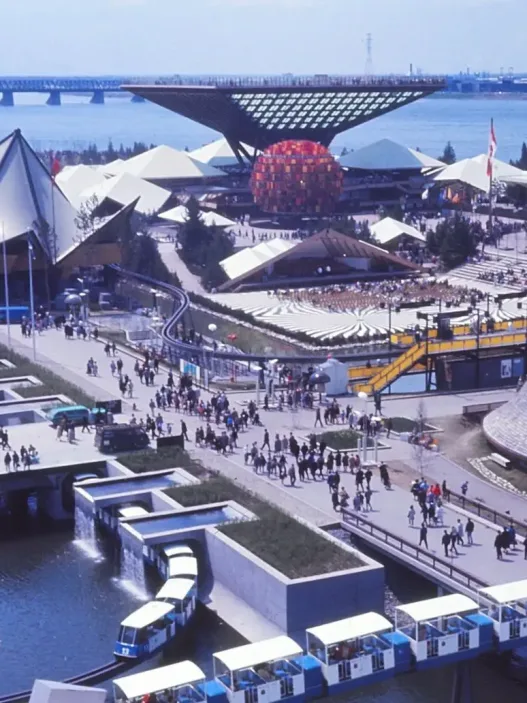The London Olympics stand as a significant moment in the history of urban development, demonstrating how a major sporting event can reshape the fabric of a city. With a rich history and diverse culture, London embraced the opportunity to host the Olympics with a vision that went beyond the games. It was about creating a lasting impact, reshaping neighbourhoods and inspiring a new generation of urban design.

Event Overview
The Olympics were not just a celebration of athletic prowess; they were a major event that brought together nations, cultures and communities. With so many countries participating and millions watching, the Games transformed London into a global hub of excitement and unity. The opening ceremony, directed by Danny Boyle, was particularly memorable for its display of British culture and creativity, while the Games themselves were a series of exciting moments that captivated audiences worldwide. But beyond sport, the Games ushered in a series of urban regeneration projects that would change the landscape of East London for years to come.
Historical Context
To understand the full impact of the Olympics, it is important to consider London’s historical context. The city has a long legacy of hosting major events, but the Games were unique in the socio-economic challenges faced by the East London area. The area had been neglected for decades, with high unemployment and limited investment. The decision to host the Olympics in this area was not just a gamble; it was a strategic move to revitalize a part of the city that needed it most. The Games provided an opportunity to address these issues and led to a concerted effort in urban planning and renewal.
Goals of the Games
The London Olympics’ ambitions extended far beyond staging a successful sporting event. The primary goal was to deliver “Games for All” by ensuring inclusivity and accessibility. This meant not only providing world-class facilities for athletes, but also engaging local communities. Organisers aimed to encourage health, wellbeing and physical activity among Londoners long after the Olympic flame had gone out, encouraging them to take part in sport and outdoor activities.
Heritage Goals
One of the most important aspects of the Olympics was its focus on legacy. The organising committee emphasised creating a sustainable legacy that would benefit future generations. This included transforming the Olympic Park into a vibrant public space with parks, housing and recreational facilities. The aim was to ensure that the Olympics were not a fleeting moment but a catalyst for long-term urban development. Legacy also aimed to improve transport links and stimulate economic growth in surrounding areas, making East London a more attractive place to live and work.
Importance in Urban Planning
The Olympics have had a profound impact on urban planning, highlighting the importance of strategic foresight in designing urban spaces. The extensive redevelopment of the Olympic Park, now known as the Queen Elizabeth Olympic Park, is a testament to this. The project integrated green space, residential developments and commercial businesses to create a balanced urban ecosystem. This holistic approach to urban design has inspired cities around the world to consider how large-scale events can be used as catalysts for transformation. The Olympics have demonstrated that careful planning can lead to sustainable urban environments, improving the quality of life for residents while also attracting visitors.
Ultimately, the London Olympics were much more than a sporting event; they were a transformative experience that redefined urban life in London. By focusing on inclusivity, sustainability and community engagement, they set a new standard for how cities can use major events to drive growth and revitalization. As urban planners and city leaders look to the future, the lessons learned from London’s Olympic legacy continue to resonate and provide a blueprint for creating vibrant and resilient urban spaces.
The London Olympics were not just a sporting event; they were a catalyst for change that reshaped London’s urban landscape. This historic event left a lasting mark on the city’s design and functionality, spurring a wave of architectural innovation and urban regeneration. Carefully planned infrastructure and striking buildings not only hosted athletes and spectators, but also enhanced the quality of life for Londoners long after the closing ceremony.
Major Architectural Developments
The architectural developments spurred by the London Olympics played a monumental role in transforming East London, a region facing economic hardship and underdevelopment. Each structure was designed with a vision that went beyond mere utility; they aimed to inspire, engage and foster community.
Olympic Stadium
The Olympic Stadium stands as a symbol of the Games and represents an extraordinary feat of engineering and design. Designed by architectural firm Populous, the stadium was crafted to evoke a sense of openness and accessibility. Its unique, bowl-like structure is surrounded by a light, ethereal exterior that emphasizes sustainability through the use of recyclable materials.
What is particularly impressive is the dual purpose of the stadium. After the Olympics, it was transformed into a multi-use venue, ensuring that the investment in its construction would provide long-term benefits to the community. It is currently home to West Ham United FC and hosts a range of events from concerts to athletics competitions. This adaptive re-use exemplifies how Olympic venues can be integrated into the urban fabric and create a lasting legacy.
Water Sports Center
Designed by renowned architect Zaha Hadid, the Aquatics Centre is another iconic structure to emerge from the London Olympics. With its wide, flowing lines and striking wave-like roof, the centre captures the essence of water in its design. Home to two swimming pools and a diving pool, the building was created with both aesthetics and functionality in mind.
The most striking aspect of the Aquatics Centre is its transformation following the Games. Originally designed to hold 17,000 spectators, the venue was downsized to 2,500, creating a more intimate environment for local swimmers and divers. This transformation highlights the importance of public accessibility in urban design, allowing residents to regularly enjoy world-class facilities.
Velodrome
Another architectural jewel of the London Olympics, the Velodrome is a masterpiece of form and function. Designed by Hopkins Architects, the cycling area stands out with its distinctive wooden structure resembling a bird in flight. The use of sustainable materials and the building’s energy-efficient design contribute to its green credentials.
What sets the velodrome apart is its community-focused approach. After the Games, it became part of Lee Valley VeloPark, a facility that promotes cycling and supports active lifestyles among Londoners. The transition from a temporary Olympic venue to a permanent community asset underlines the role of the Olympics in promoting a culture of health and wellbeing.
London Park
London Park, now known as Queen Elizabeth Olympic Park, was designed as a green oasis in the midst of urban sprawl. Encompassing vast green spaces, waterways and playgrounds, the park invites residents and visitors to connect with nature. The park not only provides recreational opportunities, but also serves as an ecological habitat, promoting biodiversity in the heart of the city.
The park's design is heavily influenced by the principles of sustainability and community engagement. The park's layout provides a safe and enjoyable environment by encouraging walking and cycling. The park has become a focal point for community events and activities, reinforcing the idea that urban spaces can be both functional and enjoyable.
Infrastructure Improvements
The impact of the London Olympics extended beyond individual buildings to include significant infrastructure improvements across the city. Improvements to public transport systems, including the expansion of the Underground network and the introduction of new bus routes, have made East London more accessible than ever. These improvements have not only made it easier for spectators to move around smoothly during the Games, but have also transformed local residents’ daily commutes.
Additionally, the focus on sustainable transport options such as cycleways and pedestrian paths reflects a wider commitment to green urban living. The legacy of these improvements is evident today as London continues to support its growing population and encourage a shift to more environmentally friendly modes of transport.
As a result, the London Olympics were a watershed moment for the city’s architectural landscape. From the Olympic Stadium to the Aquatics Centre and beyond, significant developments redefined urban living by creating spaces that were not only visually striking but also functional and community-focused. The legacy of these structures and infrastructure improvements continues to influence London, making it a model for future urban developments around the world.
Sustainable Design Principles
The London Olympics were not just a showcase of athletic prowess, but also an opportunity to redefine urban life through sustainable design principles. The event led to a significant shift in how cities approach architecture and urban planning, emphasizing environmental friendliness and efficiency. As cities around the world grapple with the challenges of climate change and urbanization, the lessons learned from London’s approach provide a guiding framework for future developments.
Environmentally Friendly Materials
Central to sustainable design is the use of environmentally friendly materials. For the London Olympics, architects and builders sought to minimise the environmental impact of construction. This meant choosing materials that were renewable, recyclable and produced with a lower carbon footprint. For example, timber from sustainably managed forests was used in buildings such as the Velodrome, reducing carbon emissions while also adding aesthetic warmth to the structure. The emphasis on local materials has also supported community economies and reduced transport emissions, setting a precedent for future developments.
Energy Efficiency Measures
Energy efficiency was a cornerstone of the Olympic venues, reflecting a commitment to reducing energy consumption. The use of advanced insulation materials and energy-efficient systems helped buildings minimise their reliance on non-renewable energy sources. The Olympic Park itself has also integrated smart grid technology, allowing real-time monitoring and management of energy use across the complex. Such innovation has not only reduced operating costs, but has also inspired other urban projects to adopt similar measures, demonstrating that efficiency can coexist with modern architectural design.
Water Management Strategies
Water management was another important focus during the Olympics, especially in a city with frequent heavy rainfalls like London. The design of the Olympic Park used sustainable drainage systems (SuDS) that capture and reuse rainwater, helping to reduce flooding and relieve the burden on the city’s sewer systems. Features such as green roofs and permeable pavements allowed water to naturally seep into the soil, encouraging groundwater recharge and supporting local ecosystems. This approach has influenced city planners to rethink how cities handle water, challenging them for strategies that are both practical and environmentally friendly.
Transportation Innovations
The Olympics have also spurred transportation innovations aimed at reducing traffic congestion and promoting sustainable travel. The introduction of new bike lanes and pedestrian-friendly spaces has made it easier for visitors to navigate the city without relying on cars. Investments in public transportation, including improvements to the metro and bus systems, have increased accessibility and reduced carbon emissions. These changes have not only facilitated seamless travel during the Games, but have also left a lasting legacy by encouraging residents to adopt more sustainable transportation options long after the events have concluded.
Biodiversity and Green Spaces
Finally, the emphasis on biodiversity and green spaces has transformed urban life in London. The Olympic Park was designed with a variety of habitats, including wetlands, woodlands and meadows, to support local wildlife. This commitment to biodiversity has not only improved the ecological health of the area, but has also provided recreational spaces for residents and visitors alike. Parks and green spaces have become an integral part of urban life, promoting physical and mental well-being. The lessons learned from the Olympics have encouraged cities around the world to incorporate more green spaces into their designs, recognising their vital role in creating sustainable, liveable urban environments.
Ultimately, the London Olympics were a catalyst for change, pushing urban design towards sustainability. The principles established during the Games – from the use of environmentally friendly materials to transportation innovations – continue to influence cities today. As urban areas evolve, the integration of these sustainable practices will be important in creating environments that are not only functional but also durable and in harmony with nature.
Social Participation and Impact
The London Olympics were not just a celebration of athletic prowess; they also marked a significant turning point in the city’s approach to urban design and community engagement. The Games provided a unique opportunity to reshape not only the physical landscape of East London, but also the fabric of its communities. By focusing on community engagement, the Olympics aimed to create a lasting impact that went beyond the fleeting excitement of the event.
Local Community Participation
One of the most important aspects of the London Olympics was the importance given to local participation. Extensive consultations were carried out with local residents prior to the Games, ensuring their voices were heard throughout the planning stages. This participation encouraged a sense of ownership among community members as they were not just spectators but active participants in shaping their environment. Local workshops, forums and events were held to gather input on how the Games could benefit the neighbourhood.
These efforts led to the development of the Olympic Park, designed with the community in mind. The park features open spaces, sports facilities and recreational areas that meet the needs of the local community. This collaborative approach has helped bridge the gap between the Games and the community, demonstrating how large-scale events can be aligned with local interests.
Economic Benefits
The economic impact of the Olympics has been profound, reaching far beyond the influx of tourists and visitors. The Games have been a catalyst for investment in infrastructure, housing and public services in East London. Significant funding has been allocated to improve transport networks, including the extension of the Docklands Light Railway and the upgrade of the London Underground. These improvements not only improved the movement of spectators during the Games, but also provided long-term benefits to local residents.
The Olympics also spurred job creation in a variety of sectors, from construction to hospitality. Thousands of local residents were employed leading up to and during the Games, providing a much-needed boost to the local economy. This influx of jobs and investment was critical to the revitalization of a region that had been struggling economically for decades.
Social Cohesion Initiatives
The Olympics also aimed to bring together different communities in London, emphasising social cohesion. A number of initiatives were launched to encourage the participation of different cultural groups in the games and related activities. Programmes were designed to promote inclusivity, bring together individuals from different backgrounds and create a sense of belonging.
Events such as the Cultural Olympiad have showcased local talent and celebrated the rich tapestry of London’s multicultural identity. These initiatives have not only enhanced the Olympic experience, they have also left a legacy of social cohesion and cooperation. By promoting understanding and interaction between different communities, the Olympics have contributed to a more connected urban environment.
Cultural Programs
Cultural programming played a vital role in the overall impact of the London Olympics. The Games served as a platform to highlight London’s art, music and heritage, engaging residents and visitors alike. The Cultural Olympiad featured a series of performances, exhibitions and installations across the city, making culture accessible to all.
These artistic endeavors were not just side events; they were an integral part of the Olympic experience. The Olympics enriched London’s cultural landscape by celebrating creativity and local talent. This focus on cultural participation encouraged local pride and inspired a new generation of artists and performers, ensuring that the legacy of the games would thrive long after the last medal was awarded.
Long-Term Social Changes
The legacy of the Olympics is evident in the long-term changes that have taken root in East London. The transformation of the Olympic Park into a vibrant hub of activity is testament to the enduring impact of the games. The park now hosts a range of events and activities, serving as a communal space for recreation, sport and cultural gatherings.
Additionally, the emphasis on sustainable urban design has led to the creation of eco-friendly buildings and green spaces, and has encouraged environmental awareness among residents. The legacy of community engagement continues as local organisations and initiatives thrive in the post-Olympic environment.
As a result, the London Olympics have been a significant catalyst for community engagement and impact. Through local participation, economic benefits, social cohesion initiatives, cultural programmes and lasting change, the Games have reshaped not only the physical environment of East London but also the very essence of its communities. This legacy is a powerful reminder of the potential of large-scale events to foster meaningful connections and improvements in urban life.
Challenges and Criticisms
The London Olympics marked a significant moment for the city, bringing not only a celebration of sport but also a profound transformation of urban space. However, this monumental event was not without its challenges and criticisms. Many aspects of the Games raised concerns, leading to debates about the impact of such large-scale projects on urban life.
Budget Overruns
One of the major issues surrounding the London Olympics was the significant budget overruns that plagued the event. Initially estimated at around a billion pounds, the final costs rose to a staggering £1 billion, sparking scrutiny and controversy. This financial discrepancy led to widespread criticism from both the public and the media. Many questioned the allocation of resources, especially given the pressing needs in other areas of the city, such as education and healthcare.
The impact of these budget overruns went beyond the financial sphere. They raised questions about accountability and transparency in the planning and execution of major public projects. Citizens began to wonder whether the benefits of hosting such a large event truly justified the costs, especially when the financial burden fell on taxpayers. The debate highlighted the need for better financial management and clearer communication between government officials and the public in future urban developments.
Displacement Issues
Another significant challenge was the displacement of people living in areas designated for the Olympic sites. The construction of the Olympic Park in East London involved the demolition of existing homes and the displacement of communities. This process disrupted lives and led to protests from those who felt they had been marginalised and ignored in the planning process.
Many residents feared they were being displaced from their neighborhoods without adequate support or compensation. The promise of renewal and new opportunities rang hollow to those forced to change their lives. This highlighted a larger problem in urban development: the balance between progress and community preservation. It raised questions about who would actually benefit from such large projects and how cities could ensure that all voices were heard in the planning stages.
Environmental Concerns
The environmental impact of the Olympics was another concern. Critics pointed out that extensive construction and infrastructure developments could lead to long-term ecological damage. Issues such as increased waste, pollution and the carbon footprint associated with the Games were hotly debated.
Sustainability became a buzzword in the planning stages, with promises of creating a “green” Olympic Games. However, the fulfillment of these promises has since come under the microscope. While some projects have emphasized sustainable practices such as using renewable energy sources and creating green spaces, many have argued that these efforts have fallen short in reducing the overall environmental impact. Future events need to truly embrace sustainability, not just as a concept, but as a guiding principle in urban design.
Post-Game Use
A major concern was what would happen to the Olympic venues after the Games had concluded. Many Olympic host cities faced the problem of "white elephants", where expensive facilities were left unused or abandoned after the event. London set ambitious goals for the legacy of its Olympic venues, aiming to transform them into spaces for community use and sporting activities.
However, the practical implementation of this vision has been mixed. While some sites, such as the Queen Elizabeth Olympic Park, have successfully integrated into the community, others have struggled to find purpose. This ongoing challenge highlights the importance of planning not just for the event itself, but for its long-term impact on the city. Ensuring that facilities remain up to date and accessible to the public is crucial to justifying the initial investment and fostering a sense of ownership within the community.
Public Perception and Reception
Finally, public perception has played a vital role in shaping the discourse around the Olympics. While many Londoners celebrated the Games as a source of pride and a catalyst for urban regeneration, others expressed doubts and concerns about their wider implications. The ambivalence of emotions has revealed the complex relationship between mega-events and the communities in which they live.
As the Games approached, a mix of excitement and anxiety filled the air. Some feared the event would prioritize tourists and international audiences over local needs. The ongoing narrative of exclusivity versus inclusivity became a central theme in the discussions. Public sentiment shifted dramatically in the wake of the Games, with some embracing the changes while others felt frustrated by the perceived lack of tangible benefits for everyday residents.
In conclusion, the challenges and criticisms surrounding the London Olympics offer important lessons for urban development. Issues such as budget, displacement, environmental impact, post-event use and public perception highlight the complexities of hosting such large-scale events. As cities continue to evolve and plan for the future, it is crucial to consider these factors in depth to ensure that urban transformations truly benefit all members of society and create lasting positive impacts.
Legacy of the Olympics
The London Olympics were not just a monumental sporting event; they were a catalyst for transformative change in urban design. The legacy of the Games goes beyond athletic achievements to encompass a vision of a more liveable, sustainable and vibrant city. This section explores aspects of this legacy by examining the successes of urban regeneration, ongoing projects, impacts on future Olympics, lessons learned and a vision for future urban spaces.
Urban Transformation Successes
The Olympics have been a powerful engine of urban regeneration, particularly in East London, an area long overlooked. The transformation of once-derelict Stratford into Queen Elizabeth Olympic Park is a prime example of how large-scale events can revitalize neighborhoods. Featuring lush landscapes, waterways, and recreational facilities, the park now serves as a community hub for sports, arts, and culture.
Significant infrastructure improvements have also been made, such as the expansion of public transport networks, including the London Underground, and the opening of the Westfield Stratford City shopping centre. These developments have not only improved accessibility, but have also revitalised local economies, created jobs and attracted businesses. The legacy of the Olympics can be seen in the thriving communities that have emerged where once there was only decay.
Ongoing Projects and Developments
The impact of the Olympics continues to be evident in London through a number of ongoing projects. The area around the Olympic Park is seeing continued development with the construction of new residential and commercial spaces. Of particular note is the East Bank project, which aims to create a cultural and educational district housing institutions such as the V&A Museum and the University of the Arts London.
These projects highlight the importance of sustainability and community engagement in urban design. Developers are increasingly focusing on creating mixed-use spaces that encourage interaction between residents, visitors and businesses. This approach not only strengthens the sense of community, but also ensures that the legacy of the Olympics remains relevant and beneficial for future generations.
Impact on Future Olympic Host Cities
Lessons from the London Olympics are shaping how future host cities approach urban planning and design. Cities like Paris, which will host the Games, are looking closely at London’s strategies, particularly in terms of sustainability and inclusivity. The emphasis on creating lasting legacies has become a central theme in Olympic planning, and host cities are now prioritizing the needs of their local communities alongside the demands of the Games.
Moreover, the concept of “temporary-to-permanent” facilities, where structures built for the Olympics are repurposed for use by the community after the Games, is also gaining traction. This approach not only minimizes waste, but also ensures that the infrastructure serves a purpose long after the Olympic flame has been extinguished.
Lessons Learned in Urban Design
The London Olympics have taught valuable lessons about the importance of inclusive design and community engagement in urban planning. The need for affordable housing has emerged as a key issue, highlighting that large-scale events should not exacerbate existing inequalities. Planners and developers have recognised the need to integrate social housing into regeneration projects, ensuring that local residents benefit from new developments.
The project also highlighted the importance of environmental sustainability. Initiatives to reduce carbon footprints, increase green spaces and improve public transport were central to the Olympic vision. These principles are now being incorporated into urban planning frameworks around the world, encouraging cities to think holistically about their environmental impact.
Vision for Urban Areas of the Future
Looking ahead, the Olympics-inspired vision for urban space is one where sustainability, inclusivity and community engagement are at the forefront. Cities are increasingly recognising that urban design should prioritise the well-being of its residents. This means creating spaces that encourage social interaction, support healthy lifestyles and promote environmental stewardship.
Future urban developments are likely to include more green space, pedestrian-friendly areas, and mixed-use environments that blend residential, commercial, and recreational spaces. An emphasis on public transport and a reduced reliance on cars will also play a key role in shaping the urban landscape of tomorrow. Ultimately, the legacy of the London Olympics serves as a guiding light, inspiring a new narrative in urban design that champions the needs of people and the planet.



